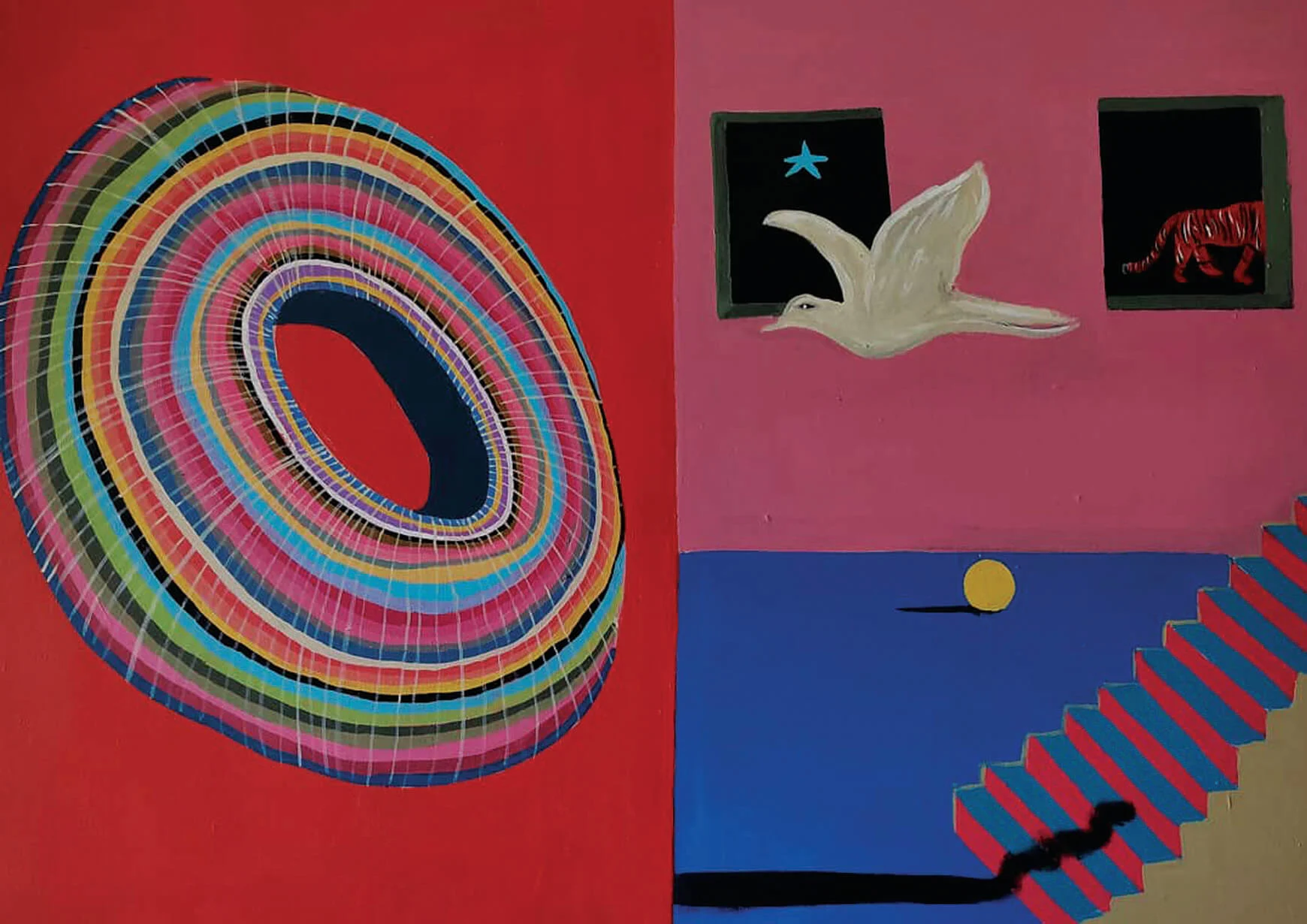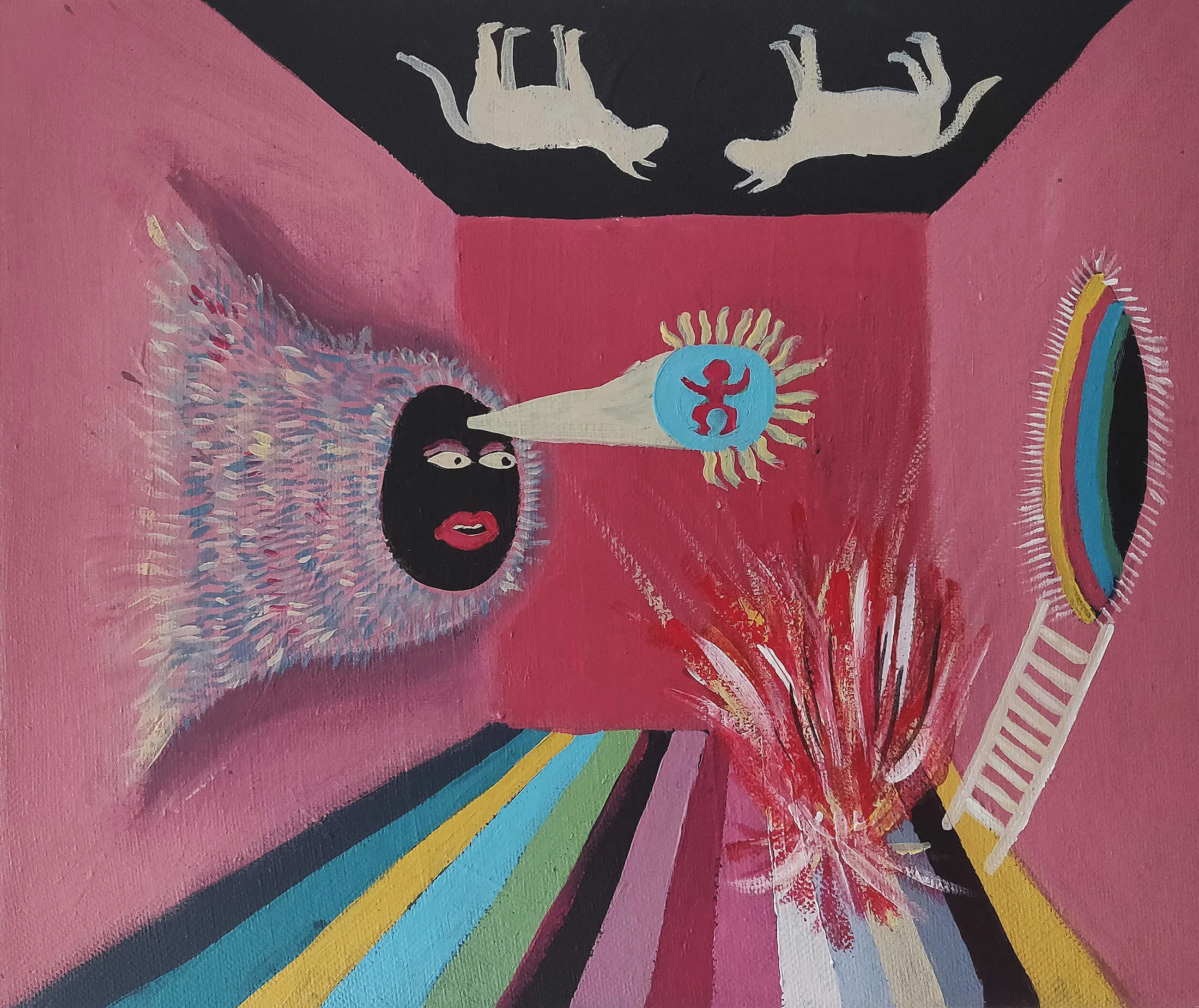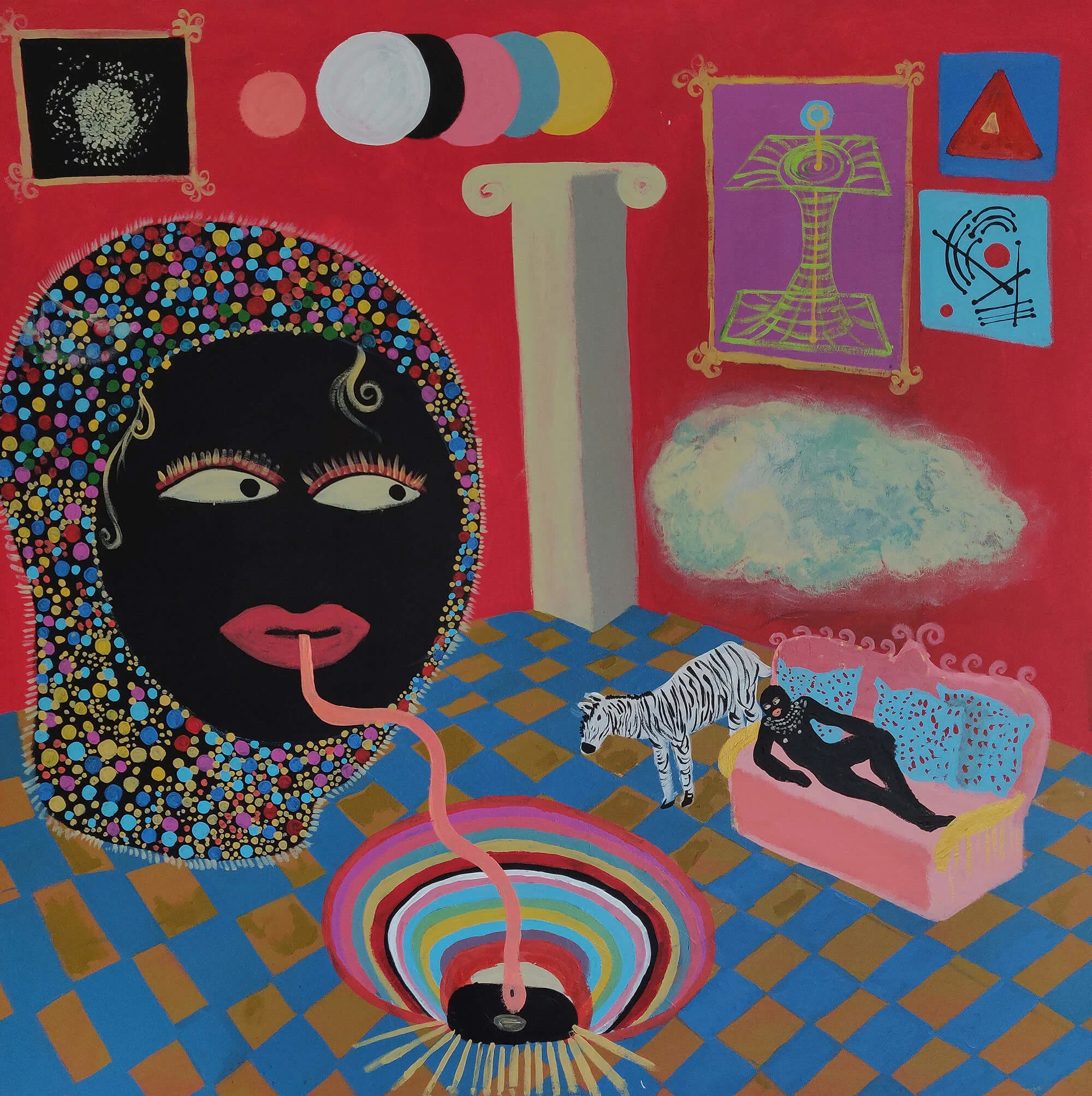

Rithika Pandey’s art is instinctual, and much like her practice, it seems that her path to it has been similarly subliminal. “There wasn’t anything specific that sparked my interest in art,” she muses. “It was more like an impulse, like picking up a glass of water to drink because you’re thirsty. A part of you needs gratification and you perform the deed that mellows that hyperactivity within.”
While Rithika has always lead with her creativity - consciously or not - a childhood of travelling and soaking in new cultures has no doubt had a hand in shaping her vision. Born in Varanasi, in northern India, her family moved to Nigeria while she was still young, then to Ghana and then to Kenya for several years before finally moving back to settle in Mumbai.
Being a sponge amongst culturally rich and colorful locales paid dividends; the wide eyed and curious child was captivated by native African craft and religious Indian drawings. “It had that ‘art brut’ appeal, unkempt and imperfect, as though colored outside the lines of a drawing but still beautiful to look at,” she says.

Being a nomadic child did have its downsides though. Rithika remembers having no friends and battling anxiety at an early age, which she warded off by daydreaming, drawing and immersing herself in her own creativity. Those feelings have imprinted on the visual artist but have also lead her towards a style that is deeply personal, her own unique way of understanding and unpacking the world around her.
“In retrospect, what I still carry with me vividly are these feelings I experienced from witnessing flamboyant, cultural people and music and colors that I have used to decorate the rooms of my memories,” she says. “I look into these spaces for inspiration and also push myself to look beyond it, and I guess due to this urge to go beyond my own standardized construct of memories and ideas I intentionally separate myself from the world. It’s strange but it helps me think. It helps my art.”

Unlike those who take the world at face value Rithika is burdened by that gift bestowed on artists to view everything a little differently, using her canvas to explore her thoughts and findings. It has become her way of understanding, of coming to terms with those existential crises we all face from time to time.
“There’s a wide gap between what I perceive the world as and what it actually is,” she says. “Our world of experiences is full of fancy tricks and clues, and I’ve found myself on the lookout for them. In that way art is undoubtedly a precious instrument for me to make sense of things that make me feel heavier and more silent on the inside, like falling in love, my sister’s anxiety, natural disasters, political turmoil, that comfy chair after a 10 hour drive, my own inexplicable anxiousness towards the future. I’ve noticed that there’s something transformative and mind-opening in the artwork’s ambiguity, which is exactly what I need to make sense of the world around me.”


Everyone has a voice and everyone wants to speak the truth.
Take a look at Rithika’s work and you’ll find her rich images somewhat metaphorical of our current time. Living in that space between chaos and calm, a woman reclines on a sofa but a snake twists around her body, her head an explosion of red dots while in another a panther lies relaxed with an arrow puncturing its side.
There is a surreal quality, that magic of otherness, and the constant exploration of the idiosyncrasies and absurdities of human existence. It’s unsurprising to learn, then, that Rithika’s biggest influence is Haruki Murakami, the master of weaving surrealist narratives whose work often explores feelings of alienation. “His work speaks to me on a spiritual level,” she says.

Her childhood spent straddling different cultures also plays a part, with Rithika drawing on her Indian heritage for inspiration while also marrying that with the aesthetic similarities found in African art. “There’s a hidden groove in both cultures that I try to emulate knowingly or unknowingly into my work in order to come to terms with the world,” she says.
“There’s a blend of not just symbols from my own heritage but the cultures I’m otherwise greatly inspired from. We hold on to the symbols left behind in our memories from the places we’ve been and the people we’ve met.”

Rithika’s work is part of a growing contemporary art scene in India, with young artists rejecting Western standards of beauty in order to explore their own heritage and identity. It’s a movement that Rithika is very much a part of, one that she notes has an air of rebellion to it that perhaps has been a long time coming. “Everyone has a voice and everyone wants to speak the truth; truths about politics, violence, cultural stereotypes, patriarchy, love, decadence, sexuality, identity and especially freedom from conventions.”
“I think it’s very self-evident when we look at art, that we’re gazing into reality through a very sensitive and visceral lens, so radically different from our own. The world would be a very boring place if we perceived and understood things similar to the other person,” she says. “I like to imagine that I filter the world through these intricate webs of pulsating colours I’ve conjured in my mind that brings my art on the table. It’s a lot of fun.”
Words by Holly Fraser.

